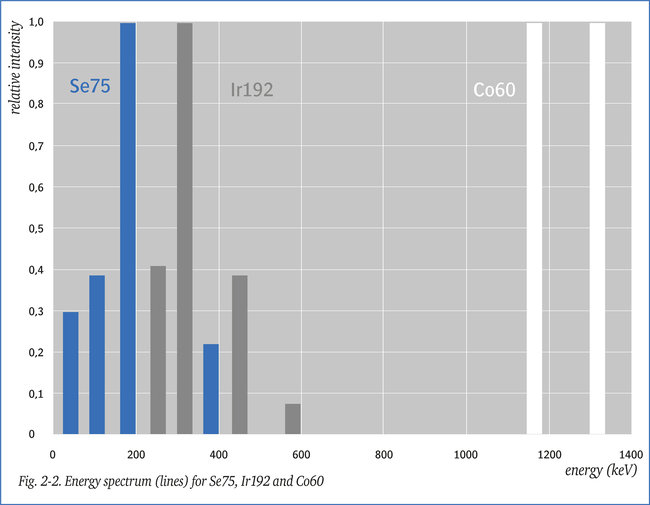
What are Gamma-rays (γ-rays)?
Radioactivity is the characteristic of certain elements to emit alpha (α), beta (β) or gamma (γ) rays or a combination thereof. Alpha and beta rays consist of electrically charged particles, whereas gamma rays are of an electromagnetic nature. Gamma rays arise from the disintegration of atomic nuclei within some radioactive sub- stances, also known as isotopes. The energy of gamma-radiation cannot be controlled; it depends upon the nature of the radioactive substance. Nor is it possible to control its intensity, since it is impossible to alter the rate of disintegration of a radioactive substance. Unlike X-rays, generated to a continuous spectrum, Gamma-rays are emitted in an isolated line spectrum, i.e. with one or more discrete energies of different intensities. The Figure shows the energy spectrum lines for Selenium75, Cobalt60 and Iridium192. In practical NDT applications, sources (radio active isotopes) are allocated an average nominal energy value for calculation purposes, see a later section about radioactive sources. Spectrum components with the highest energy levels (keV values) influence radiographic quality the most.
What is determining the absorption and scattering of radiation?


